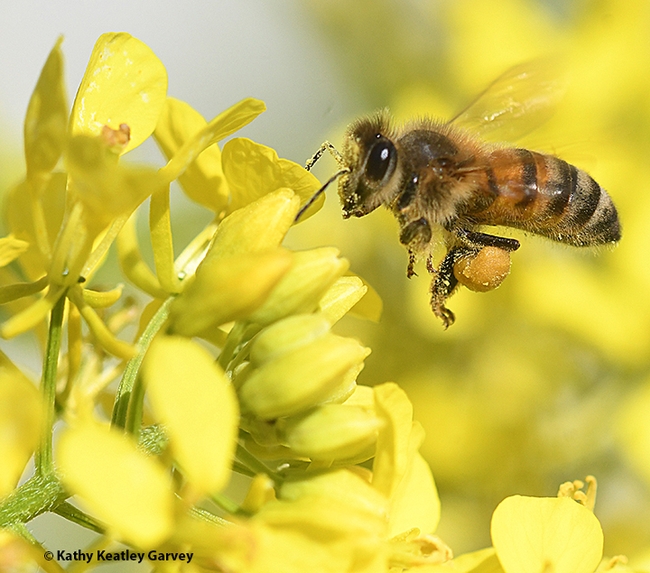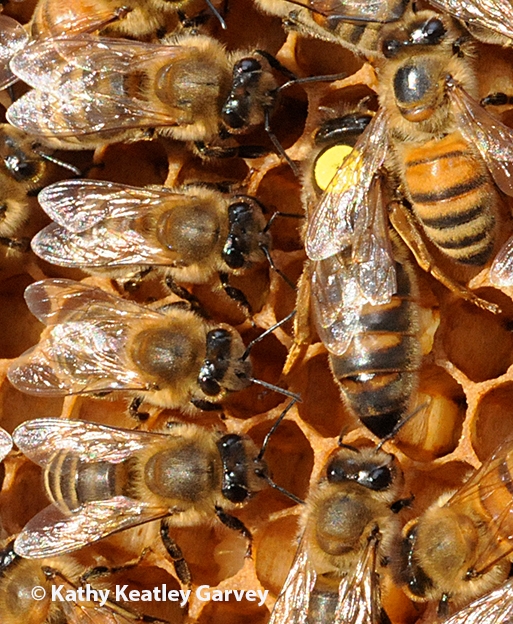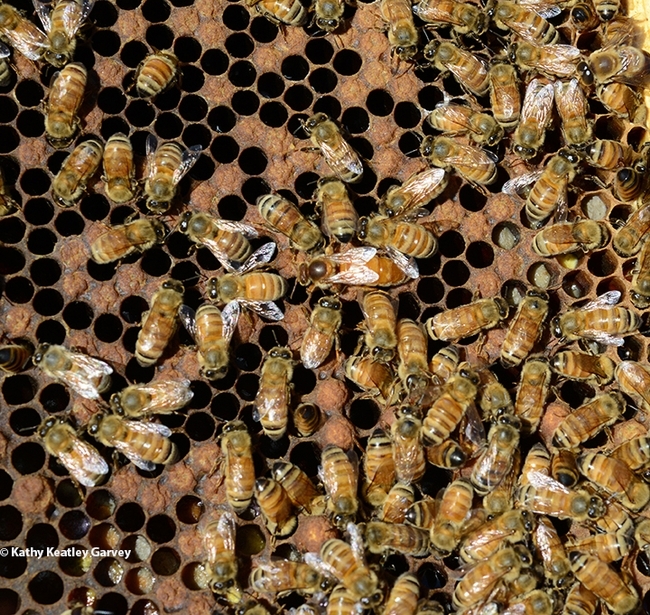
We know that European colonists introduced honey bees (Apis mellifera) into the Jamestown colony (now Virginia) in 1622.
But where did the Western honey bee originate? Scientists at York University, a public research university in Toronto, Ontario, Canada, recently discovered that it originated in Asia. Genetics told them so.
The abstract of the paper, "Thrice Out of Asia and the Adaptive Radiation of the Western Honey Bee," published in Science:
"The origin of the western honey bee Apis mellifera has been intensely debated. Addressing this knowledge gap is essential for understanding the evolution and genetics of one of the world's most important pollinators. By analyzing 251 genomes from 18 native subspecies, we found support for an Asian origin of honey bees with at least three expansions leading to African and European lineages. The adaptive radiation of honey bees involved selection on a few genomic 'hotspots.' We found 145 genes with independent signatures of selection across all bee lineages, and these genes were highly associated with worker traits. Our results indicate that a core set of genes associated with worker and colony traits facilitated the adaptive radiation of honey bees across their vast distribution."

York University doctoral student Kathleen Dogantzis of the Faculty of Science led the research team. "Our research suggests that a core-set of genes allowed the honey bee to adapt to a diverse set of environmental conditions across its native range by regulating worker and colony behaviour," Dogantzis says in a Phys.Org article.
Why is it important to know the origin? To understand its evolution, its genetics and its adaptation and how this can relate to the current population of bees and to modern-day beekeeping.
Or, as they wrote in their scientific paper: "Resolving the ancestral origin and evolutionary expansion of A. mellifera will enhance our ability to identify derived and ancestral genetic mutations. This is especially relevant for tracing the evolution of derived phenotypes and for discerning how locally adapted subspecies may contribute to the fitness and diversity of managed colonies."
"In conclusion," they wrote, "we have presented compelling evidence that A. mellifera emerged in Asia with the remainder of extant honey bees but then expanded into its current distribution via Western Asia. This expansion event is marked by at least three independent colonization routes that gave rise to seven genetically distinct lineages. Modern populations of A. mellifera maintain high genetic diversity, which has allowed the species to adapt to diverse environments through repeated selection among a common set of genes. These genes are often related to worker phenotypes, supporting that the worker caste is key to the adaptative radiation of the species."
Jamestown Colony. The first honey bees to arrive in what is now the United States were what beekeepers call the "dark bee" subspecies of Northern Europe, Apis mellifera mellifera. Today the Italian bee, Apis mellifera ligustica is the most common bee the United States.
The Italian bee didn't arrive in America until 1859. "The American beekeeping public was enamored with the newly available yellow and gentle bees," bee breeder-geneticist and co-author Susan Cobey of Washington State University (formerly of UC Davis) wrote in a chapter of the book, Honey Bee Colony Health: Challenges and Sustainable Solutions. "As a result, Italian-type bees form the basis for most present-day commercial beekeeping stocks in the U.S. Following the arrival and success of honey bees from Italy, U.S. beekeepers developed an interest to try other honey bee subspecies." Cobey studied with Harry H. Laidlaw Jr. (1907-2003) of UC Davis, the "father of honey bee genetics" and for whom the university's bee biology facility is named.
And speaking of the introduction of honey bees into the United States, it took 231 for years for honey bees to arrive in California. Beekeeper Christopher A. Shelton introduced honey bees to the Golden State in 1853, establishing an apiary just north of San Jose. (Check out the bee plaque at the San Jose International Airport.)
Now we know that our beloved Western honey bee originated in Asia.
Attached Images:
